Chimeric antigen receptors for adoptive T cell therapy in acute myeloid leukemia
- PMID: 28851445
- PMCID: PMC5576380
- DOI: 10.1186/s13045-017-0519-7
Chimeric antigen receptors for adoptive T cell therapy in acute myeloid leukemia
Abstract
Currently, conventional therapies for acute myeloid leukemia (AML) have high failure and relapse rates. Thus, developing new strategies is crucial for improving the treatment of AML. With the clinical success of anti-CD19 chimeric antigen receptor (CAR) T cell therapies against B-lineage malignancies, many studies have attempted to translate the success of CAR T cell therapy to other malignancies, including AML. This review summarizes the current advances in CAR T cell therapy against AML, including preclinical studies and clinical trials, and discusses the potential AML-associated surface markers that could be used for further CAR technology. Finally, we describe strategies that might address the current issues of employing CAR T cell therapy in AML.
Keywords: Acute myeloid leukemia; Chimeric antigen receptors; Immunotherapy.
Conflict of interest statement
Ethics approval and consent to participate
This is not applicable for this review.
Consent for publication
This is not applicable for this review.
Competing interests
The authors declare that they have no competing interests.
Publisher’s Note
Springer Nature remains neutral with regard to jurisdictional claims in published maps and institutional affiliations.
Figures
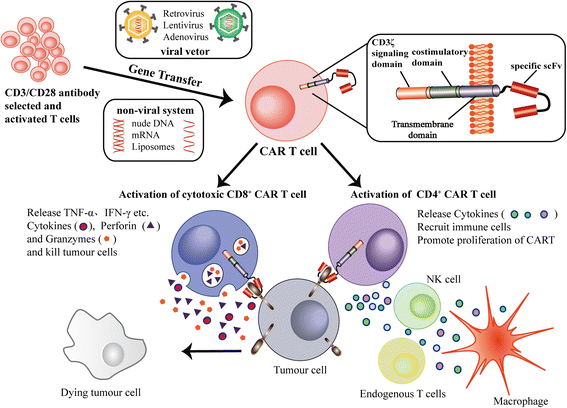
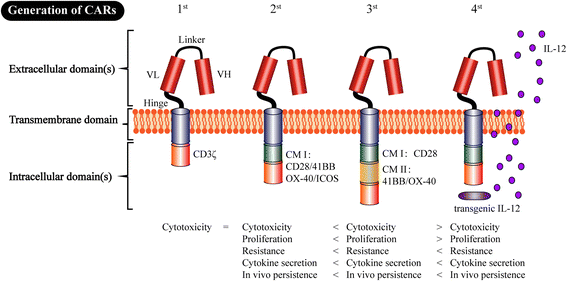
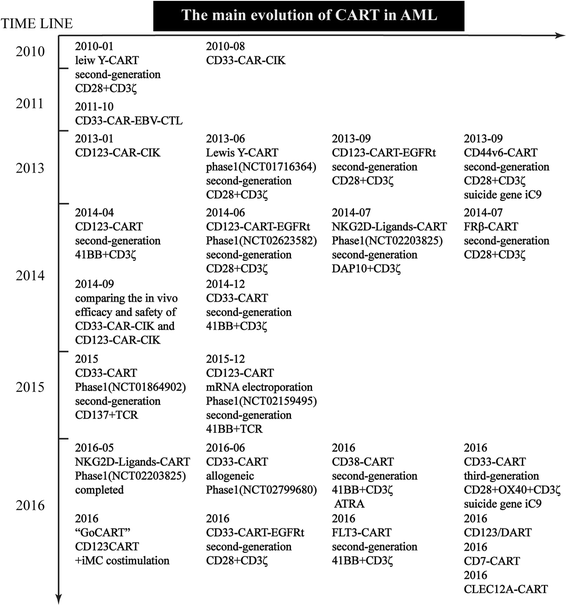
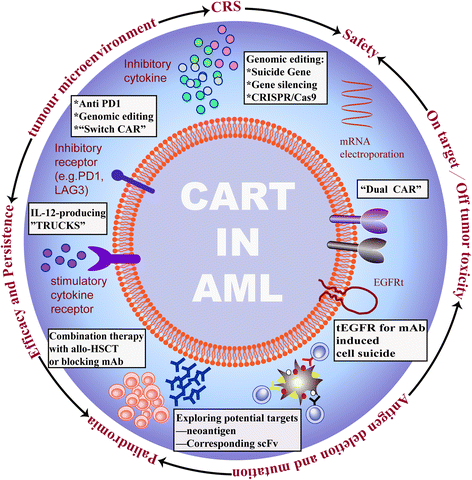
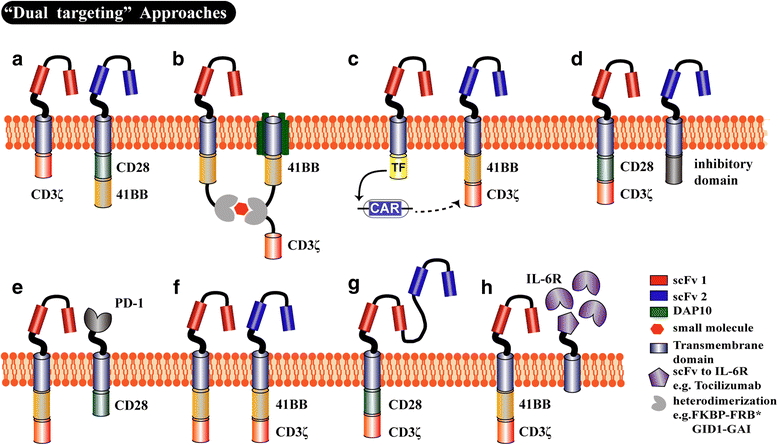
Similar articles
-
Development of A Chimeric Antigen Receptor Targeting C-Type Lectin-Like Molecule-1 for Human Acute Myeloid Leukemia.Int J Mol Sci. 2017 Oct 27;18(11):2259. doi: 10.3390/ijms18112259. Int J Mol Sci. 2017. PMID: 29077054 Free PMC article.
-
Targeting of folate receptor β on acute myeloid leukemia blasts with chimeric antigen receptor-expressing T cells.Blood. 2015 May 28;125(22):3466-76. doi: 10.1182/blood-2014-11-612721. Epub 2015 Apr 17. Blood. 2015. PMID: 25887778 Free PMC article.
-
A novel TCR-like CAR with specificity for PR1/HLA-A2 effectively targets myeloid leukemia in vitro when expressed in human adult peripheral blood and cord blood T cells.Cytotherapy. 2016 Aug;18(8):985-994. doi: 10.1016/j.jcyt.2016.05.001. Epub 2016 Jun 2. Cytotherapy. 2016. PMID: 27265873 Free PMC article.
-
Recent advances of chimeric antigen receptor T-cell therapy for acute myeloid leukemia.Front Immunol. 2025 May 2;16:1572407. doi: 10.3389/fimmu.2025.1572407. eCollection 2025. Front Immunol. 2025. PMID: 40386773 Free PMC article. Review.
-
Novel CAR T therapy is a ray of hope in the treatment of seriously ill AML patients.Stem Cell Res Ther. 2021 Aug 20;12(1):465. doi: 10.1186/s13287-021-02420-8. Stem Cell Res Ther. 2021. PMID: 34412685 Free PMC article. Review.
Cited by
-
Peripheral leukemia burden at time of apheresis negatively affects the clinical efficacy of CART19 in refractory or relapsed B-ALL.Mol Ther Methods Clin Dev. 2021 Oct 27;23:633-643. doi: 10.1016/j.omtm.2021.10.006. eCollection 2021 Dec 10. Mol Ther Methods Clin Dev. 2021. PMID: 34901308 Free PMC article.
-
Leukemia cell-derived microvesicles induce T cell exhaustion via miRNA delivery.Oncoimmunology. 2018 Mar 26;7(7):e1448330. doi: 10.1080/2162402X.2018.1448330. eCollection 2018. Oncoimmunology. 2018. PMID: 29900066 Free PMC article.
-
Bortezomib enhances cytotoxicity of ex vivo-expanded gamma delta T cells against acute myeloid leukemia and T-cell acute lymphoblastic leukemia.Cytotherapy. 2021 Jan;23(1):12-24. doi: 10.1016/j.jcyt.2020.09.010. Epub 2020 Nov 6. Cytotherapy. 2021. PMID: 33168453 Free PMC article.
-
Current Strategies to Enhance Anti-Tumour Immunity.Biomedicines. 2018 Mar 23;6(2):37. doi: 10.3390/biomedicines6020037. Biomedicines. 2018. PMID: 29570634 Free PMC article. Review.
-
Recent advances in CAR-T therapy for the treatment of acute myeloid leukemia.Ther Adv Hematol. 2024 Jul 23;15:20406207241263489. doi: 10.1177/20406207241263489. eCollection 2024. Ther Adv Hematol. 2024. PMID: 39050113 Free PMC article. Review.
References
-
- Yates J, Glidewell O, Wiernik P, Cooper MR, Steinberg D, Dosik H. Cytosine arabinoside with daunorubicin or adriamycin for therapy of acute myelocytic leukemia: a CALGB study. Blood. 1982;60:454–462. - PubMed
-
- Yates JW, Wallace J, Jr, Ellison RR, Holland JF. Cytosine arabinoside (NSC-63878) and daunorubicin (NSC-83142) therapy in acute nonlymphocytic leukemia. Cancer Chemother Rep. 1973;57:485–488. - PubMed
Publication types
MeSH terms
LinkOut - more resources
Full Text Sources
Other Literature Sources
Medical

